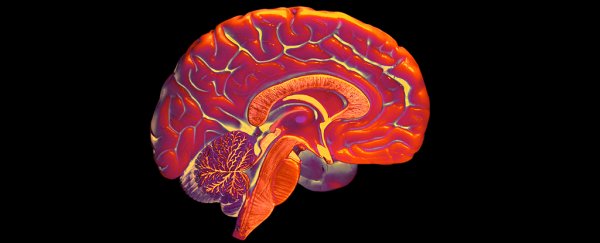Neurologists have managed to pin down a sequence of actions in brain cells linked with the experience of perception - getting a little bit closer to the source of consciousness in our brains.
To do this, they peered into the brains of people with epilepsy and pinpointed the emergence of consciousness from the actions of distinct neurons into a complex symphony of awareness.
Taking advantage of diagnostic probes embedded in the brains of epilepsy patients, researchers from Tel Aviv University have identified a pathway of activity that plays a role in converting a stimulus into an image we can see in our minds.
As far as scientific mysteries go, human consciousness is still up there. For centuries we've wondered what distinguishes self-aware grey matter from a plain old meat calculator, and it's a riddle that's proved hard to solve.
"Computers and robots interact with the world without being conscious," says the lead author of a recent study on the subject, Hagar Gelbard-Sagiv.
"But something miraculous happens inside our brains to make us conscious and experience the world from a subjective perspective."
Plenty of experiments have been conducted on the topic over the years, too, many using functional magnetic resonance imaging technology or a similar form of high-level scanning.
They've all helped identify which of the brain's suburbs are responsible for transforming a visual stimulus into a personal cinematic experience, but they haven't helped us understand the detailed computations involved.
To do that would require tools that could track the traffic on a street level inside our brain, which means sinking a sensitive probe right down into the thick of things.
Ethically speaking, a search for the roots of consciousness just isn't a good-enough reason to risk such an invasive procedure - but what if you already had this probe for other reasons?
Patients with epilepsy sometimes have intracranial depth electrodes implanted to measure debilitating seizures, and researchers will often politely ask if they mind doing an experiment or two in the meantime.
In this study nine such patients graciously agreed to stare at various images while a team of scientists recorded the activity measured by the probes.
Over 20 sessions, the volunteers stared at a pair of images - each positioned in front of one eye. Because each eye could only see one of the images, their brains couldn't blur them together into a single picture.
Instead, the brain was forced to pick one image to deal with at a time, in a process called binocular rivalry. Meanwhile light from both of them continuously stimulated the visual cortex.
These two processes – visual stimulation and 'seeing' – are often hard to pull apart. But this experiment was able to separate the two processes and measure the timing of the processes in detail.
Patients were required to alert the researchers the very moment they became aware of either image's existence.
As it turns out, a precise area in the medial-frontal lobe activates a whole two seconds before the subject 'sees' the picture in their head. A second zone activates a second later, this one in the medial-temporal lobe.
"Two seconds is a long time in terms of neural activity," says Gelbard-Sagiv.
"We believe that the activity of these neurons not only correlates with perception, but also may take part in the process that leads to the emergence of a conscious percept."
It's not the first time researchers have used this method to try to nail down the sequence of pathways used to create awareness, but other studies forced changes in imagery, creating a variable that risked interfering with results.
Binocular rivalry provides a clever way to leave the whole process of a change in awareness to the test subject's own brain.
"The study captures individual cells in the human brain just before one conscious experience is replaced by another," says senior author, Itzhak Fried.
Whether it might help us create self-aware computers in the future is still anybody's guess. So too is the question of whether consciousness is a cognitive tool we've evolved to use, or simply some side-effect of other processes - but studies like this one are getting us ever closer to figuring it out.
This research was published in Nature Communications.
